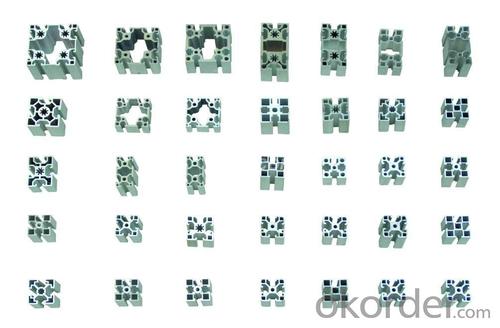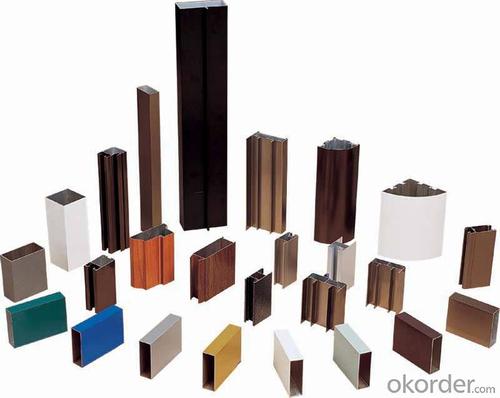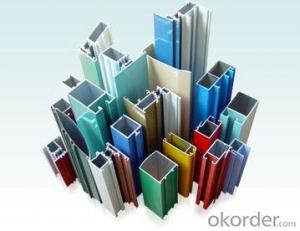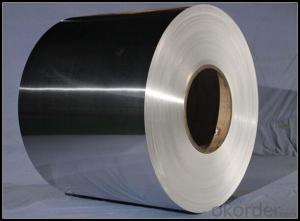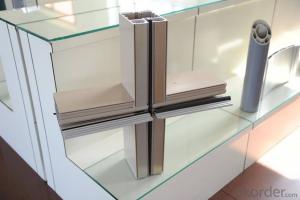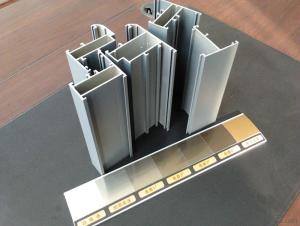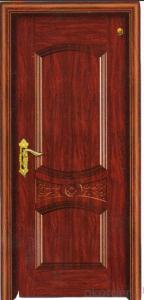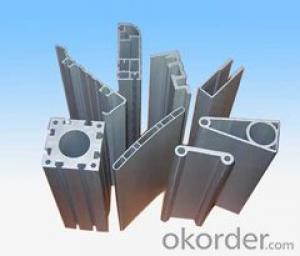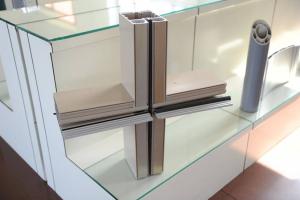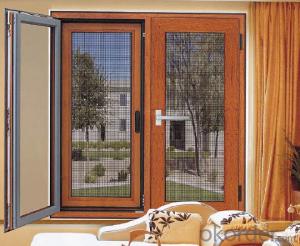Aluminum Section Profile for Door and Window
- Loading Port:
- China Main Port
- Payment Terms:
- TT OR LC
- Min Order Qty:
- -
- Supply Capability:
- -
OKorder Service Pledge
OKorder Financial Service
You Might Also Like
Aluminium is a relatively soft,durable, lightweight, ductile and malleablemetal with appearance ranging from silvery to dull gray,depending on the surface roughness. It is nonmagnetic and does not easilyignite. A fresh film of aluminium serves as a good reflector (approximately92%) of visible light and an excellent reflector (as much as98%) of medium and far infrared radiation. The yield strength of pure aluminium is 7–11 MPa,while aluminium alloys have yield strengths ranging from200 MPa to 600 MPa. Aluminium has about one-third the density and stiffnessof steel. It iseasily machined,cast, drawn and extruded.
Aluminum Profile
Material | Alloy 6063,6061,6005or according to customer’s choice |
Temper | T3, T4, T5, T6 |
Surface | Anodize, electrophoresis, powder coating, PVDF coating, wood grain painting, matted, etc. |
Length | Coating 6.5 meters, Anodizing 6.5 meters, Mill finish 5 meters |
Application | Industrial, electrical equipment(TV set, air conditioner, refrigerator, computer), decoration,construction, transportation |
Custom Made | We can package following with customer's request. |
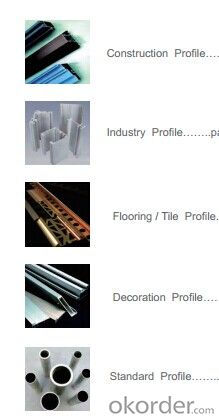
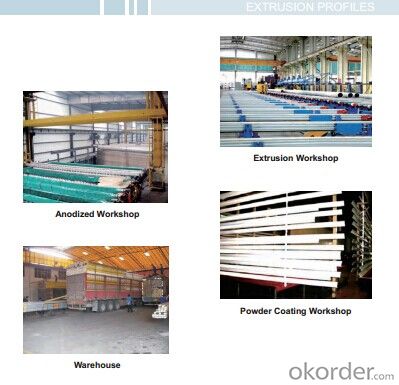
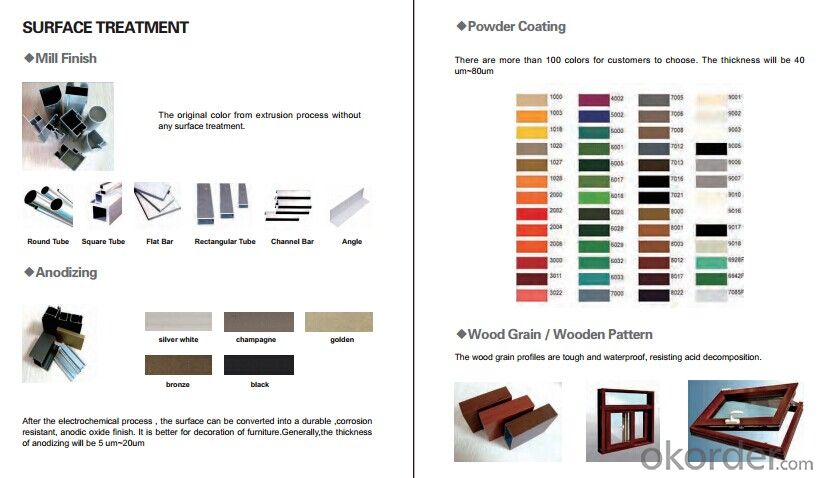
- Q: Is it possible to recycle and reuse aluminum profiles?
- <p>Yes, aluminum profiles can be recycled and reused. Recycling aluminum is an efficient and environmentally friendly process, as it requires significantly less energy compared to producing aluminum from raw materials. Recycled aluminum maintains its properties, making it suitable for various applications. The recycling process involves melting the aluminum, which can then be reformed into new profiles without losing its strength or quality. This practice reduces waste and conserves natural resources, contributing to sustainability efforts.</p>
- Q: How do you protect aluminum profiles from scratching or damage?
- There are multiple methods available for safeguarding aluminum profiles against scratches or damage. To begin with, a commonly used approach involves applying a protective coating or finish. This can be accomplished by utilizing paints, lacquers, or powder coatings that serve as a barrier between the aluminum surface and external elements. These coatings not only enhance the appearance but also offer protection against scratches, corrosion, and other forms of damage. Another effective temporary solution is the utilization of protective film or tape. These films or tapes can be directly applied onto the aluminum profiles, acting as a shield. Generally transparent, these films can be easily peeled off once the profiles are installed or ready for use. A different technique involves handling and transporting the aluminum profiles with caution. This entails the use of appropriate handling equipment, such as gloves, to avoid direct contact with the surface. Additionally, the use of protective packaging materials like bubble wrap or foam can provide cushioning during transportation, preventing scratches or dents. Regular cleaning and maintenance of the aluminum profiles is also crucial. Dust, dirt, and debris can act as abrasives, causing scratches over time. Cleaning with a soft cloth or sponge and mild detergent on a regular basis can help eliminate these particles and preserve the profile's appearance. Lastly, implementing proper storage practices is of utmost importance. Storing aluminum profiles in a dry and clean environment, away from sharp objects or heavy items, can minimize the risk of scratching or damage. The use of racks or shelves with protective padding can provide an additional layer of protection. By adhering to these measures, aluminum profiles can be effectively safeguarded against scratches or damage, ensuring their durability and preserving their aesthetic appeal.
- Q: This question asks about the measures to be taken to ensure that the manufacturing process for aluminum profiles complies with environmental regulations.
- <p>To ensure that the production process for aluminum profiles meets environmental standards, you should implement a comprehensive environmental management system. This includes adhering to regulations on emissions, waste disposal, and resource usage. Monitor and reduce energy consumption, use eco-friendly materials, and optimize production processes to minimize waste. Regularly assess environmental impact, conduct audits, and seek certifications like ISO 14001. Engage in continuous improvement, invest in green technologies, and educate employees on environmental responsibilities. Collaborate with suppliers to ensure they also meet environmental standards.</p>
- Q: Are aluminum profiles suitable for the furniture industry?
- Yes, aluminum profiles are suitable for the furniture industry. They are lightweight, durable, and have a sleek and modern appearance. Additionally, aluminum profiles can be easily customized and shaped into various designs and sizes, making them versatile for different furniture applications. They are also resistant to corrosion and weathering, making them suitable for both indoor and outdoor furniture.
- Q: Inquire about the various uses of aluminum profiles within the field of architecture.
- <p>Aluminum profiles have a wide range of applications in architecture due to their strength, durability, and lightweight properties. They are commonly used in curtain walls, which are the exterior coverings of buildings, providing both aesthetic appeal and structural integrity. Aluminum profiles are also utilized in window and door frames for their resistance to corrosion and ability to withstand various weather conditions. They are employed in structural glazing to hold glass in place securely. Furthermore, aluminum profiles are used in sun shading systems to control the amount of sunlight entering a building, enhancing energy efficiency. They are also found in handrails, balustrades, and other safety features for their strength and low maintenance requirements. Overall, aluminum profiles contribute to the sustainability and modern design of architectural projects.</p>
- Q: How can I distinguish the aluminum profiles in the building and the aluminum in the industry?
- Door frames, aluminum profiles and doors and windows, aluminum profiles are in the building. Your picture is a line of scaffold material, usually in industrial material.
- Q: Can aluminum profiles be used in the production of consumer electronics?
- Yes, aluminum profiles can be used in the production of consumer electronics. Aluminum is a lightweight and durable material that offers excellent heat dissipation properties, making it suitable for electronic devices that require efficient cooling. Additionally, aluminum profiles can be easily customized and integrated into various designs, providing flexibility for manufacturers in creating sleek and stylish consumer electronics products.
- Q: This question asks for a list of various fasteners that are used to attach aluminum profiles to building frames.
- <p>There are several types of fasteners used to fix aluminum profiles on building frames, including: 1. Bolts and nuts, which provide a strong and secure connection. 2. Rivets, which are permanent and can't be undone once installed. 3. Screws, which are versatile and can be used in various applications. 4. Clamps, which hold profiles together without penetrating the material. 5. Adhesives, which bond profiles together chemically. 6. Welding, which joins profiles together by melting and fusing them. 7. C-clips and T-nuts, which are specialized fasteners designed for use with aluminum extrusions. The choice of fastener depends on the specific requirements of the project, such as load-bearing capacity, aesthetic considerations, and ease of assembly or disassembly.</p>
- Q: What are the load-bearing capacities of aluminum profiles?
- The load-bearing capacities of aluminum profiles vary depending on factors such as the profile's shape, size, and design. It is essential to consult the manufacturer's specifications or engineering data to determine the specific load-bearing capacity of a particular aluminum profile.
- Q: Can aluminum profiles be used in sports equipment manufacturing?
- Yes, aluminum profiles can be used in sports equipment manufacturing. Aluminum is a popular choice in the manufacturing of sports equipment due to its lightweight yet durable properties. It allows for the creation of strong and sturdy equipment that is also easy to handle and maneuver. Aluminum profiles can be used in various sports equipment such as bicycles, tennis rackets, golf clubs, ski poles, and even lightweight frames for sports wheelchairs. The versatility and strength of aluminum make it an ideal material for sports equipment manufacturing, providing athletes with reliable and high-performance gear.
Send your message to us
Aluminum Section Profile for Door and Window
- Loading Port:
- China Main Port
- Payment Terms:
- TT OR LC
- Min Order Qty:
- -
- Supply Capability:
- -
OKorder Service Pledge
OKorder Financial Service
Similar products
Hot products
Hot Searches
Related keywords


